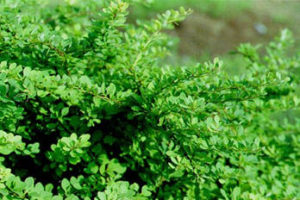 Description
Description
Japanese Barberry (Berberis thunbergii) forms thickets, and out-competes native plants, reducing biodiversity. Berries eaten by birds spread the invasive, and it invades forests edges. It has small thorns that make it hard to remove.
ID
This invasive species has small alternate leaves, and in the spring many small light yellow flowers with six petals bloom. The shrub is easily recognized in the fall, when many small red berries form along the branches.
Management
Stems can be cut with clippers, but the stumps must be painted with herbicides in order to prevent the shrub from growing back. With small populations of this shrub, the root systems can be pulled up.
Alternatives
There are many good native plants that survive in the same habitat as Japanese Barberry, including Virginia Sweetspire, Oak Leaf Hydrangea, Sweet Pepperbush, Inkberry Holly, and Winterberry Holly.